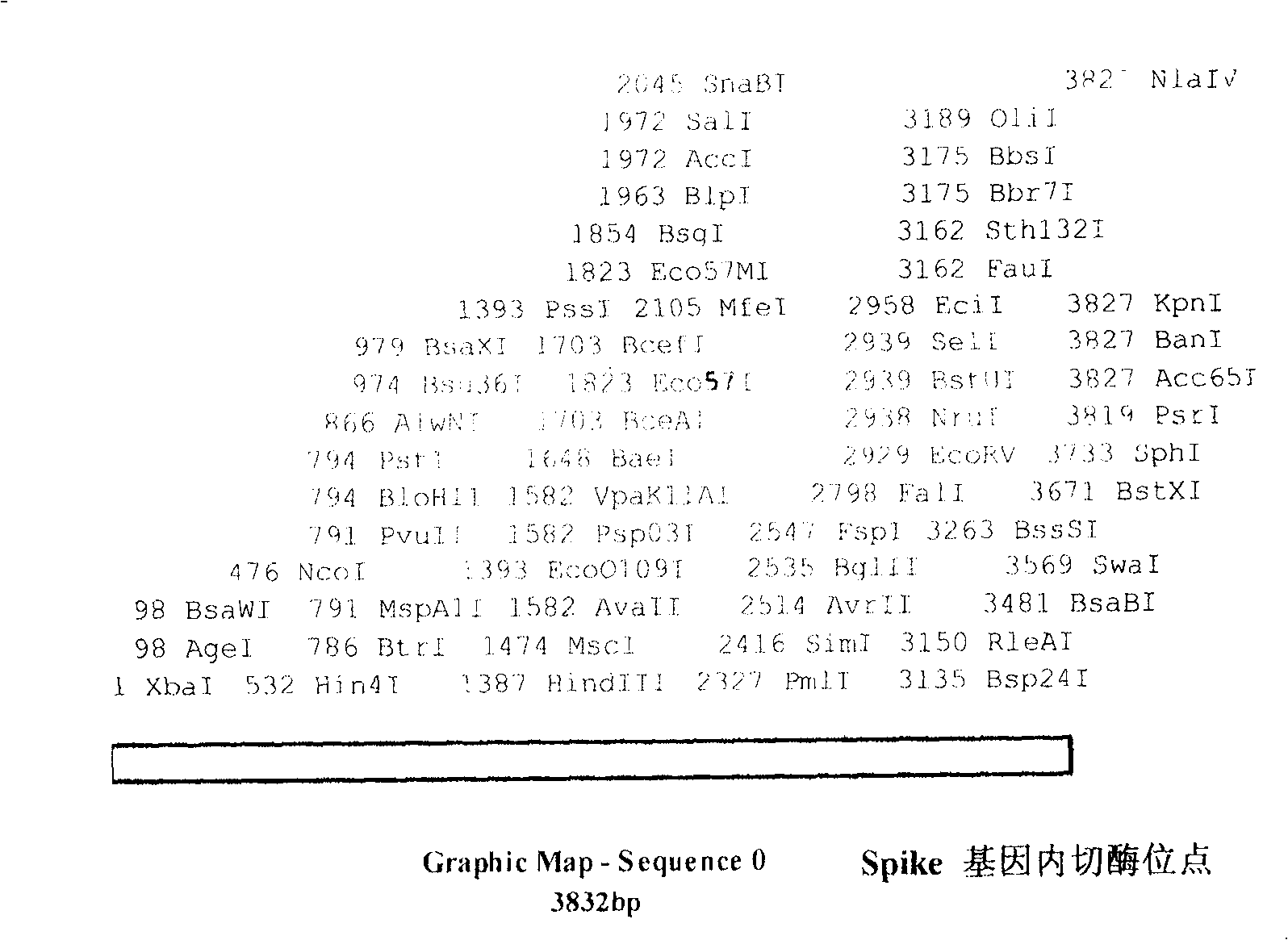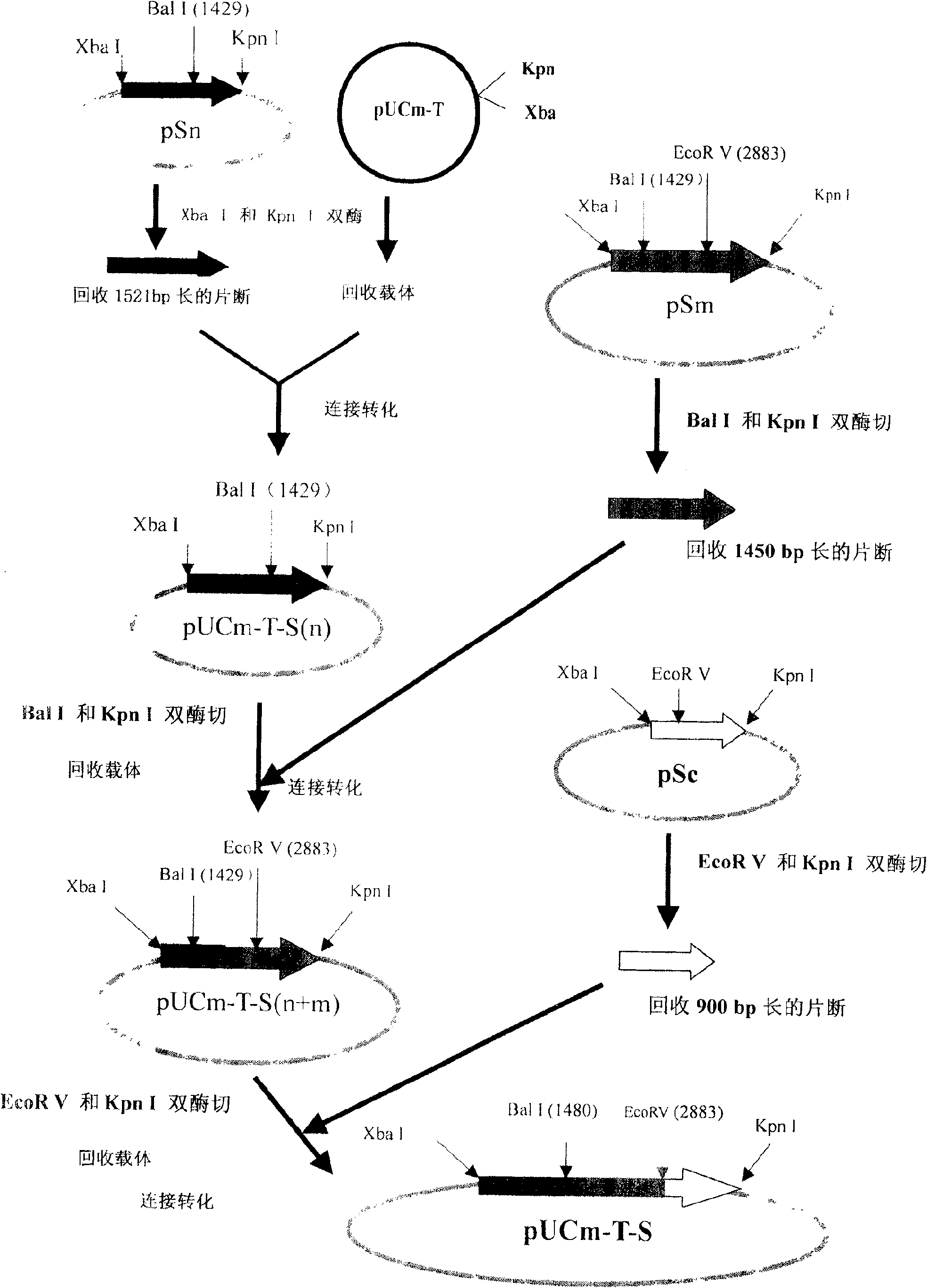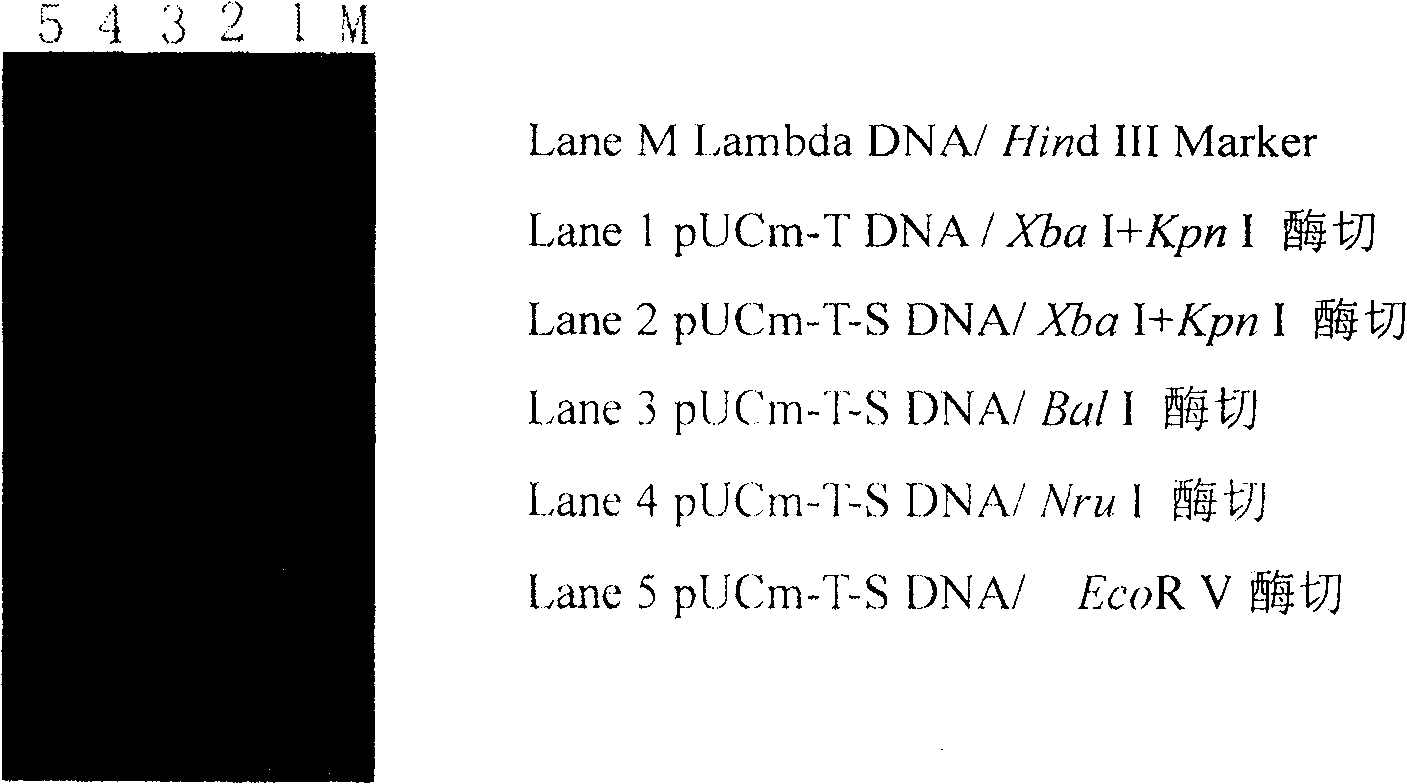Coronal virus genetic engineering protein and use thereof
A technology of genetic engineering and coronavirus, applied in the direction of genetic engineering, application, virus/bacteriophage, etc., can solve the problems of increasing the difficulty of specimens and the risk of laboratory infection, low separation rate, long time, etc.
- Summary
- Abstract
- Description
- Claims
- Application Information
AI Technical Summary
Problems solved by technology
Method used
Image
Examples
Embodiment 1
[0073] The preparation of embodiment 1 full-length SARS-CoV Spike gene
[0074] For the structure of the full-length SARS-CoV Spike gene, see figure 1 .
[0075] 1. Construction of recombinant plasmid pUCm-T-S(n) containing SARS-CoV Spike gene N fragment
[0076] Take out the E.coli strain containing the plasmid pSn (containing the gene sequence 1-1469bp encoding the Spike protein) preserved with glycerol from the refrigerator, streak it on the LB plate containing kanamycin (100 μg / mL), and culture it overnight at 37°C . Pick a single colony with a sterile toothpick, inoculate into 3 mL of LB liquid medium containing kanamycin (100 μg / mL), cultivate overnight at 37° C., 220 rpm, and extract plasmid pSn by alkaline lysis. Digest pSn with Xba I and Kpn I, recover a 1521bp fragment, and then ligate it with the same double-digested plasmid pUCm-T (Shanghai Sangong), and transform the ligation product into Escherichia coli JM109 to obtain a recombinant plasmid pUCm-T-S (n) Posi...
Embodiment 2
[0082] Embodiment 2 Contains the construction of the recombinant baculovirus transfer vector of full-length SARS-CoV Spike gene
[0083]Synthesis of amplification primers: upstream primer: TTCTCgAgATgTTTATTTTCTTATTATTCTTACTCTCACTAg (the underline is the Xho I restriction site), downstream primer gCgAATTCTTATgTgTAATgTAATTTgACACCCTTg (the underline is the EcoRI restriction site). Using pUCm-T-S as a template, the target gene SARS-CoV S was amplified by conventional PCR method, and the size of the PCR product was checked by gel electrophoresis to see if it was in line with the expectation. The PCR product was recovered and cloned into the pUCm-T vector, and transformed into Escherichia coli E.coli JM109, the colony was picked and the plasmid was quickly extracted for enzyme digestion identification, and the positive clone obtained was named pUCm-TFS.
[0084] The recombinant plasmid pUCm-TFS DNA was extracted and the nucleotide sequence was determined by the dideoxy method. The s...
Embodiment 3
[0088] Example 3 Construction of recombinant insect baculovirus containing full-length SARS-CoV Spike gene
[0089] 1. Preparation of Insect Cell Culture
[0090] Add 4 mL of complete insect cell culture medium containing 10% fetal bovine serum to a 25 cm2 culture flask. Take out an ampoule of cryopreserved sf9 cells, and quickly place it in a 37°C water bath. Break the neck of the ampoule and transfer the contents to a 25cm2 culture bottle. Shake the flask gently by hand to disperse the cells evenly, and incubate at 27°C for 2-3h until the cells adhere to the wall. Remove the old culture medium and replace with 5 mL of fresh complete culture medium containing 10% fetal bovine serum. Continue to incubate and change the medium every 3 days (remove the old medium and replace it with fresh one) until the cells grow confluent. Prepare a new 25cm2 culture flask and add 4mL of complete culture solution containing 10% fetal bovine serum. When the sf9 cells have grown to confluen...
PUM
| Property | Measurement | Unit |
|---|---|---|
| diameter | aaaaa | aaaaa |
| molecular weight | aaaaa | aaaaa |
| purity | aaaaa | aaaaa |
Abstract
Description
Claims
Application Information
 Login to View More
Login to View More - R&D
- Intellectual Property
- Life Sciences
- Materials
- Tech Scout
- Unparalleled Data Quality
- Higher Quality Content
- 60% Fewer Hallucinations
Browse by: Latest US Patents, China's latest patents, Technical Efficacy Thesaurus, Application Domain, Technology Topic, Popular Technical Reports.
© 2025 PatSnap. All rights reserved.Legal|Privacy policy|Modern Slavery Act Transparency Statement|Sitemap|About US| Contact US: help@patsnap.com



